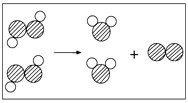问题
选择题
读图回答1~2题

1.H经线穿越的我国大地形区有 [ ]
A.内蒙古高原、黄土高原、青藏高原、云贵高原
B.内蒙古高原、黄土高原、四川盆地、云贵高原
C.黄土高原、长江中下游平原、四川盆地、云贵高原
D.准噶尔盆地、天山、塔里木盆地、青藏高原
2.E纬线穿过的我国省级行政单位有[ ]
A.山东省、河北省、山西省、甘肃省、新疆维吾尔自治区
B.河北省、山西省、内蒙古自治区、甘肃省、青海省
C.辽宁省、河北省、山西省、甘肃省、新疆维吾尔自治区
D.江苏省、河南省、陕西省、宁夏回族自治区、青海省
答案
1.B
2.C

